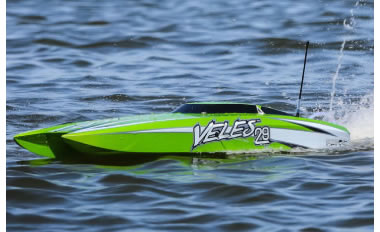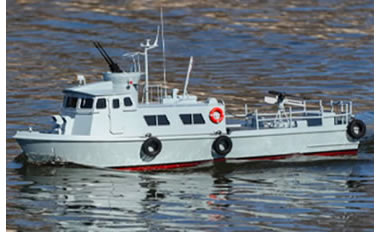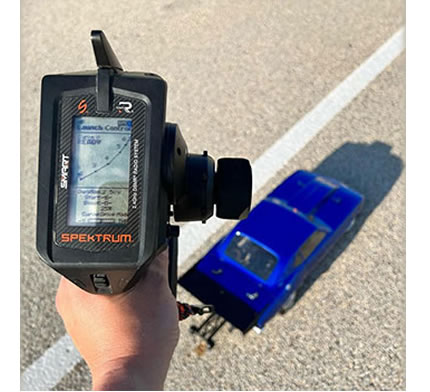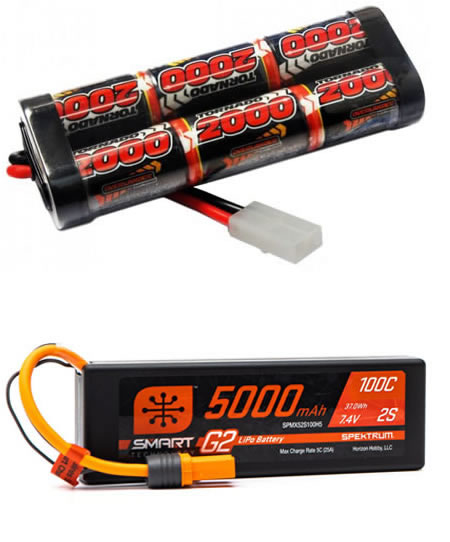Airfix 1/72 Vickers Valiant # 11001A
 Spread the cost with Paypal Credit
0% for 24 months available on orders over £199
Spread the cost with Paypal Credit
0% for 24 months available on orders over £199
 Spread the cost with Klarna
0% for 24 months available on orders over £199
Spread the cost with Klarna
0% for 24 months available on orders over £199
![]()
The Vickers Valiant was a British high-altitude jet bomber designed to carry nuclear weapons that served as part of the Royal Air Force's strategic deterrent force in the 1950s and 1960s.
Vickers-Armstrongs designed it in response to the Air Ministry's Specification B.35/46 for a nuclear-armed jet-powered bomber.
The Valiant was the first V bomber to go into service, followed by the Handley Page Victor and the Avro Vulcan.
The Valiant was the only V bomber to drop live nuclear missiles during its service (for test purposes).
During the Suez Crisis in 1956, Valiants operating from Malta launched conventional bombing flights over Egypt during Operation Musketeer.
The main Valiant force was utilised in the nuclear deterrence role in the confrontation between NATO and the Warsaw Pact forces from 1956 to early 1966.
Aerial refuelling, aerial surveillance, and electronic warfare were all carried out by other squadrons.
In 1962, the V-force fleet, which included the Valiant, switched from high-level to low-level flight in response to developments in Soviet Union surface-to-air missile (SAM) technology.
This allowed them to dodge SAM assaults that they would have received if they were flying at high altitudes.
In 1964, fatigue and crystalline corrosion in the wing rear spar attachment forgings of Valiants were discovered.
A repair effort began in late 1964, but after a change of government, Denis Healey, the new Minister of Defence, decided that the Valiant should be removed from service, which occurred in early 1965.
Until the 1980s, the Victor and Vulcan V-bombers were in service.

'A11001A' Scheme A - Vickers Valiant B(PR)K.1 WZ393, RAF No.90 Squadron, Honington, Suffolk, England, 1957

'A11001A' Scheme B - Vickers Valiant BK.Mk1 XD818, RAF No.49 Squadron, Kiritimati (Christmas Island), Pacific Ocean, ‘Operation Grapple’, 1957
| SKU | AFX11001A |
|---|---|
| Manufacturer | Airfix |
| Scale | 1/72 |
| EAN | 5055286687259 |
| Short Description | Airfix 1/72 Vickers Valiant # 11001A |
-
 Airfix 1/72 Small Beginners Set Tiger 1 # 55004Special Price £9.89 was £10.99 Save 10%
Airfix 1/72 Small Beginners Set Tiger 1 # 55004Special Price £9.89 was £10.99 Save 10% -
 Airfix 1/72 Small Beginners Set Sherman Firefly # 55003Special Price £10.79 was £11.99 Save 10%
Airfix 1/72 Small Beginners Set Sherman Firefly # 55003Special Price £10.79 was £11.99 Save 10% -
 Airfix 1/72 Best of British Spitfire and Hawk # 50187Special Price £22.49 was £24.99 Save 10%
Airfix 1/72 Best of British Spitfire and Hawk # 50187Special Price £22.49 was £24.99 Save 10% -
 Airfix 1/72 Messerschmitt Me-262 & North-American P-51D Mustang Dogfight Double # 50183Special Price £30.59 was £33.99 Save 10%
Airfix 1/72 Messerschmitt Me-262 & North-American P-51D Mustang Dogfight Double # 50183Special Price £30.59 was £33.99 Save 10% -
 Airfix 1/72 Blackburn Buccaneer S.2B RAF # 06022Special Price £30.59 was £33.99 Save 10%
Airfix 1/72 Blackburn Buccaneer S.2B RAF # 06022Special Price £30.59 was £33.99 Save 10% -
 Airfix 1/72 Pz.Kpfw.VI Tiger I # 02342Special Price £8.99 was £9.99 Save 10%
Airfix 1/72 Pz.Kpfw.VI Tiger I # 02342Special Price £8.99 was £9.99 Save 10% -
 Airfix 1/72 Messerschmitt Bf-109G-6 # 02029BSpecial Price £10.19 was £11.99 Save 15%
Airfix 1/72 Messerschmitt Bf-109G-6 # 02029BSpecial Price £10.19 was £11.99 Save 15% -
 Airfix 1/72 de Havilland Mosquito B.XVI # 04023Special Price £22.49 was £24.99 Save 10%
Airfix 1/72 de Havilland Mosquito B.XVI # 04023Special Price £22.49 was £24.99 Save 10% -
 Airfix 1/72 Supermarine Spitfire Mk.Vc Small Beginners Set # 55001Special Price £9.89 was £10.99 Save 10%
Airfix 1/72 Supermarine Spitfire Mk.Vc Small Beginners Set # 55001Special Price £9.89 was £10.99 Save 10% -
 Airfix 1/72 Red Arrows Hawk Beginners Set NEW TOOL # 55002Special Price £9.89 was £10.99 Save 10%
Airfix 1/72 Red Arrows Hawk Beginners Set NEW TOOL # 55002Special Price £9.89 was £10.99 Save 10% -
 Airfix 1/72 Small Beginners Set Tiger 1 # 55004Special Price £9.89 was £10.99 Save 10%
Airfix 1/72 Small Beginners Set Tiger 1 # 55004Special Price £9.89 was £10.99 Save 10% -
 Airfix 1/72 Small Beginners Set Sherman Firefly # 55003Special Price £10.79 was £11.99 Save 10%
Airfix 1/72 Small Beginners Set Sherman Firefly # 55003Special Price £10.79 was £11.99 Save 10% -
 Airfix 1/72 Best of British Spitfire and Hawk # 50187Special Price £22.49 was £24.99 Save 10%
Airfix 1/72 Best of British Spitfire and Hawk # 50187Special Price £22.49 was £24.99 Save 10% -
 Airfix 1/72 Messerschmitt Me-262 & North-American P-51D Mustang Dogfight Double # 50183Special Price £30.59 was £33.99 Save 10%
Airfix 1/72 Messerschmitt Me-262 & North-American P-51D Mustang Dogfight Double # 50183Special Price £30.59 was £33.99 Save 10% -
 Airfix 1/72 Blackburn Buccaneer S.2B RAF # 06022Special Price £30.59 was £33.99 Save 10%
Airfix 1/72 Blackburn Buccaneer S.2B RAF # 06022Special Price £30.59 was £33.99 Save 10% -
 Airfix 1/72 Pz.Kpfw.VI Tiger I # 02342Special Price £8.99 was £9.99 Save 10%
Airfix 1/72 Pz.Kpfw.VI Tiger I # 02342Special Price £8.99 was £9.99 Save 10% -
 Airfix 1/72 Messerschmitt Bf-109G-6 # 02029BSpecial Price £10.19 was £11.99 Save 15%
Airfix 1/72 Messerschmitt Bf-109G-6 # 02029BSpecial Price £10.19 was £11.99 Save 15% -
 Airfix 1/72 de Havilland Mosquito B.XVI # 04023Special Price £22.49 was £24.99 Save 10%
Airfix 1/72 de Havilland Mosquito B.XVI # 04023Special Price £22.49 was £24.99 Save 10% -
 Airfix 1/72 Supermarine Spitfire Mk.Vc Small Beginners Set # 55001Special Price £9.89 was £10.99 Save 10%
Airfix 1/72 Supermarine Spitfire Mk.Vc Small Beginners Set # 55001Special Price £9.89 was £10.99 Save 10% -
 Airfix 1/72 Red Arrows Hawk Beginners Set NEW TOOL # 55002Special Price £9.89 was £10.99 Save 10%
Airfix 1/72 Red Arrows Hawk Beginners Set NEW TOOL # 55002Special Price £9.89 was £10.99 Save 10% -
 Airfix 1/72 Small Beginners Set Tiger 1 # 55004Special Price £9.89 was £10.99 Save 10%
Airfix 1/72 Small Beginners Set Tiger 1 # 55004Special Price £9.89 was £10.99 Save 10% -
 Airfix 1/72 Small Beginners Set Sherman Firefly # 55003Special Price £10.79 was £11.99 Save 10%
Airfix 1/72 Small Beginners Set Sherman Firefly # 55003Special Price £10.79 was £11.99 Save 10% -
 Airfix 1/72 Best of British Spitfire and Hawk # 50187Special Price £22.49 was £24.99 Save 10%
Airfix 1/72 Best of British Spitfire and Hawk # 50187Special Price £22.49 was £24.99 Save 10% -
 Airfix 1/72 Messerschmitt Me-262 & North-American P-51D Mustang Dogfight Double # 50183Special Price £30.59 was £33.99 Save 10%
Airfix 1/72 Messerschmitt Me-262 & North-American P-51D Mustang Dogfight Double # 50183Special Price £30.59 was £33.99 Save 10% -
 Airfix 1/72 Blackburn Buccaneer S.2B RAF # 06022Special Price £30.59 was £33.99 Save 10%
Airfix 1/72 Blackburn Buccaneer S.2B RAF # 06022Special Price £30.59 was £33.99 Save 10% -
 Airfix 1/72 Pz.Kpfw.VI Tiger I # 02342Special Price £8.99 was £9.99 Save 10%
Airfix 1/72 Pz.Kpfw.VI Tiger I # 02342Special Price £8.99 was £9.99 Save 10%


























